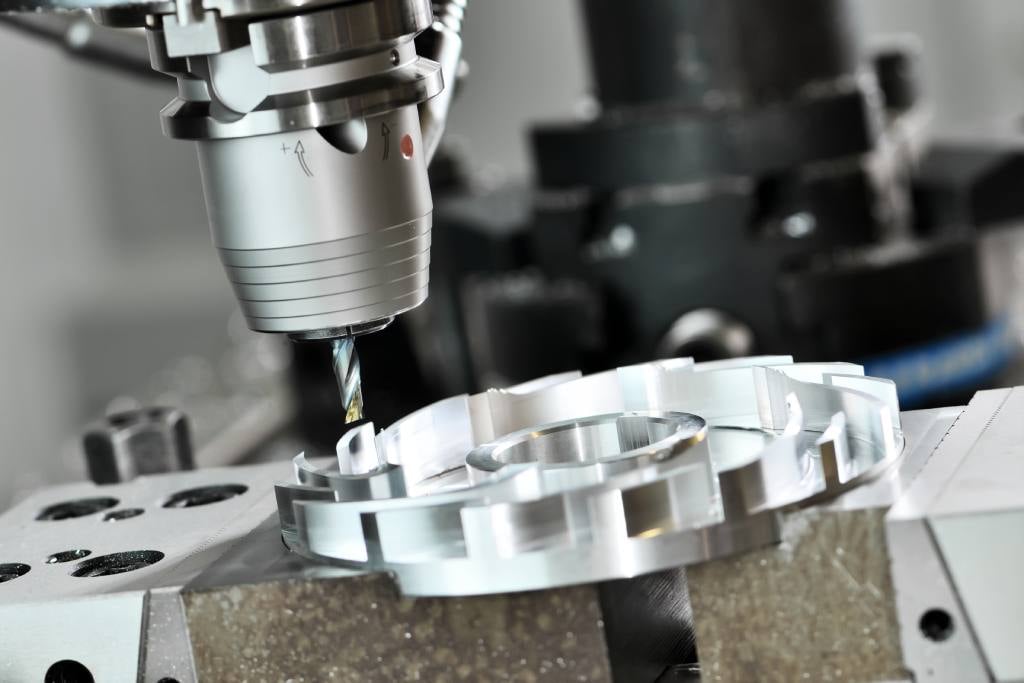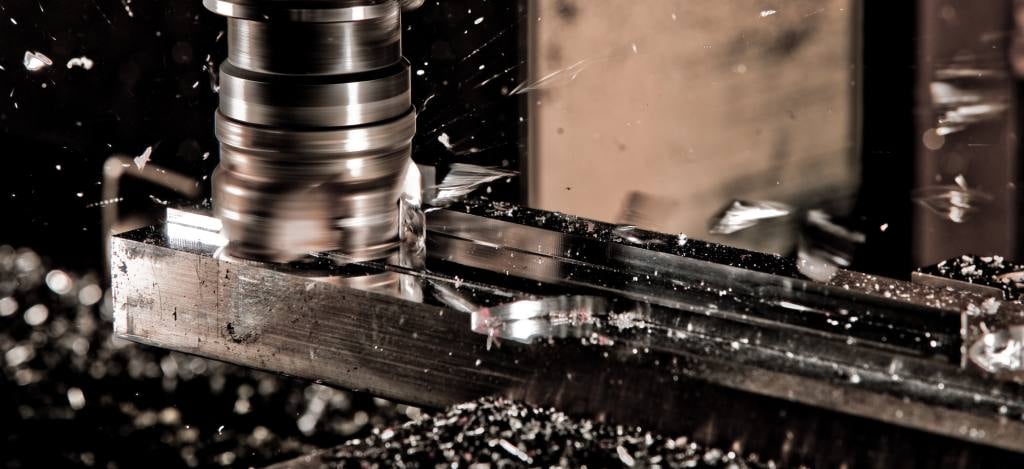
CNC technology has transformed how we manufacture parts, providing unmatched accuracy, productivity, and versatility. Two essential methods that use this technology are CNC milling and CNC turning.
Let’s explore the unique characteristics, strengths, and uses of CNC milling vs turning. You will need to understand these factors and compare CNC milling vs turning for your specific project.
What is CNC Milling?
CNC milling is a manufacturing method that uses computer-guided, multi-point cutting tools by gradually chipping away material from a workpiece. The most common CNC milling machines work across three axes to create a finished workpiece. This results in a uniquely designed part or product.
Its ability to produce complex shapes and features like slots, holes, and contours with impressive accuracy sets this process apart. The ability of milling machines to move their cutting tools and workpieces in various directions makes it possible to craft parts with sophisticated geometries.
These are some typical applications for CNC milling:
- It is best for complex parts with intricate geometries or multiple faces.
- It is used when precision-cut depths, angles, and details are required on non-cylindrical parts.
- It is ideal for prototypes or parts that require surface finishing details.
What Are the Advantages of CNC Milling?
These are the main advantages of CNC milling:
- CNC milling can produce complex parts with intricate geometries.
- It has high accuracy in cutting, making it suitable for detailed and tight-tolerance parts.
- It can work with various materials, including steel, aluminum, titanium, plastics, wood, and composites.
What Are the Disadvantages of CNC Milling?
These are the main disadvantages of CNC milling:
- More material waste can occur, especially with complicated parts.
- This process requires more complex setups, which require more time.
What is CNC Turning?
CNC turning is a method where the material you're working with spins rapidly, and a single-point cutting tool chips away at it. This process shapes the material into a specific cylindrical form. It's an incredibly effective way to create round or tubular objects from metal or plastic.
These are some typical applications for CNC turning:
- It is used to create parts with cylindrical or round shapes, including rods, shafts, and fasteners.
- Its speed and efficiency can produce high volumes of parts with similar shapes.
- It is ideal for components that require precise outer diameters or circular cross-sections.
What Are the Advantages of CNC Turning?
- It is more suited to quickly creating parts, especially round or cylindrical parts.
- The process typically has less complex tooling and faster production times.
- It achieves high precision, particularly with cylindrical dimensions.
What are the Disadvantages of CNC Turning?
- It is mainly used for parts with rotational symmetry, limiting its application to cylindrical parts.
- Workpieces will need additional processes for complex parts to achieve the desired end part.

Comparing CNC Milling vs CNC Turning
CNC milling and turning are two manufacturing processes that have many similarities and differences. For you to decide which one is best for your project, you should pay keen attention to the key aspects of CNC milling vs turning.
What Are the Similarities between CNC Milling and Turning?
- Both processes utilize CNC technology to control cutting tools and workpiece movement.
- CNC milling and turning are subtractive processes that remove material from a workpiece to shape the final product.
- They can be used on various materials, including metals, plastics, and composites.
- Both processes offer high precision and accuracy in producing parts.
- Both processes involve tool wear over time, requiring regular maintenance and tool replacement.
What Are the Differences between CNC Milling and Turning?
- CNC milling involves a rotating cutting tool moving across a stationary workpiece to remove material. Milling machines can move in multiple axes, allowing for complex shapes and features.
- CNC turning involves a rotating workpiece cut by a stationary single-point cutting tool.
- CNC milling is ideal for parts with complex geometries, including slots, holes, and irregular surfaces. It is suitable for projects requiring detailed features on multiple surfaces.
- CNC turning is best for round or cylindrical parts like rods, shafts, and bushings. It is preferred for parts requiring precise circular diameters and tubular shapes.
- CNC milling can sometimes generate more material waste, especially for complex parts.
- CNC turning produces Less material waste for cylindrical components but is limited to simpler shapes.
Connect with an Experienced Partner
Choosing between CNC milling vs turning depends on the specific requirements of the manufactured part. If you need help determining which process is suitable for your project, then connect with the experts at RCO Engineering. We have years of experience servicing and manufacturing for aerospace, defense, and automotive industries.

Comments